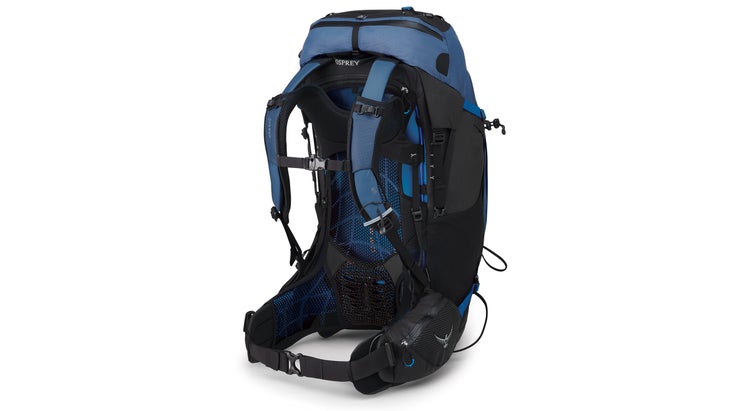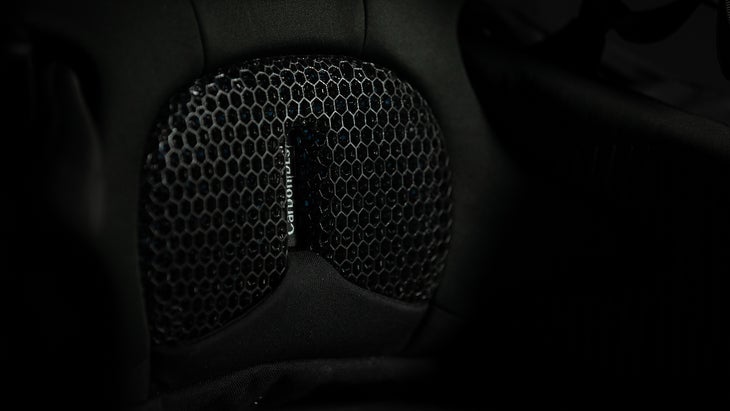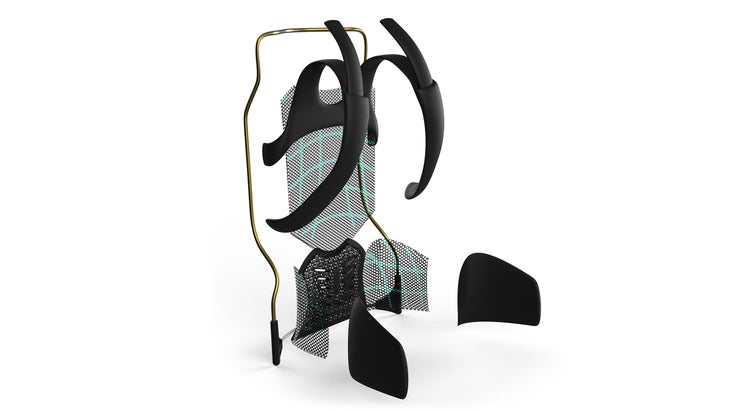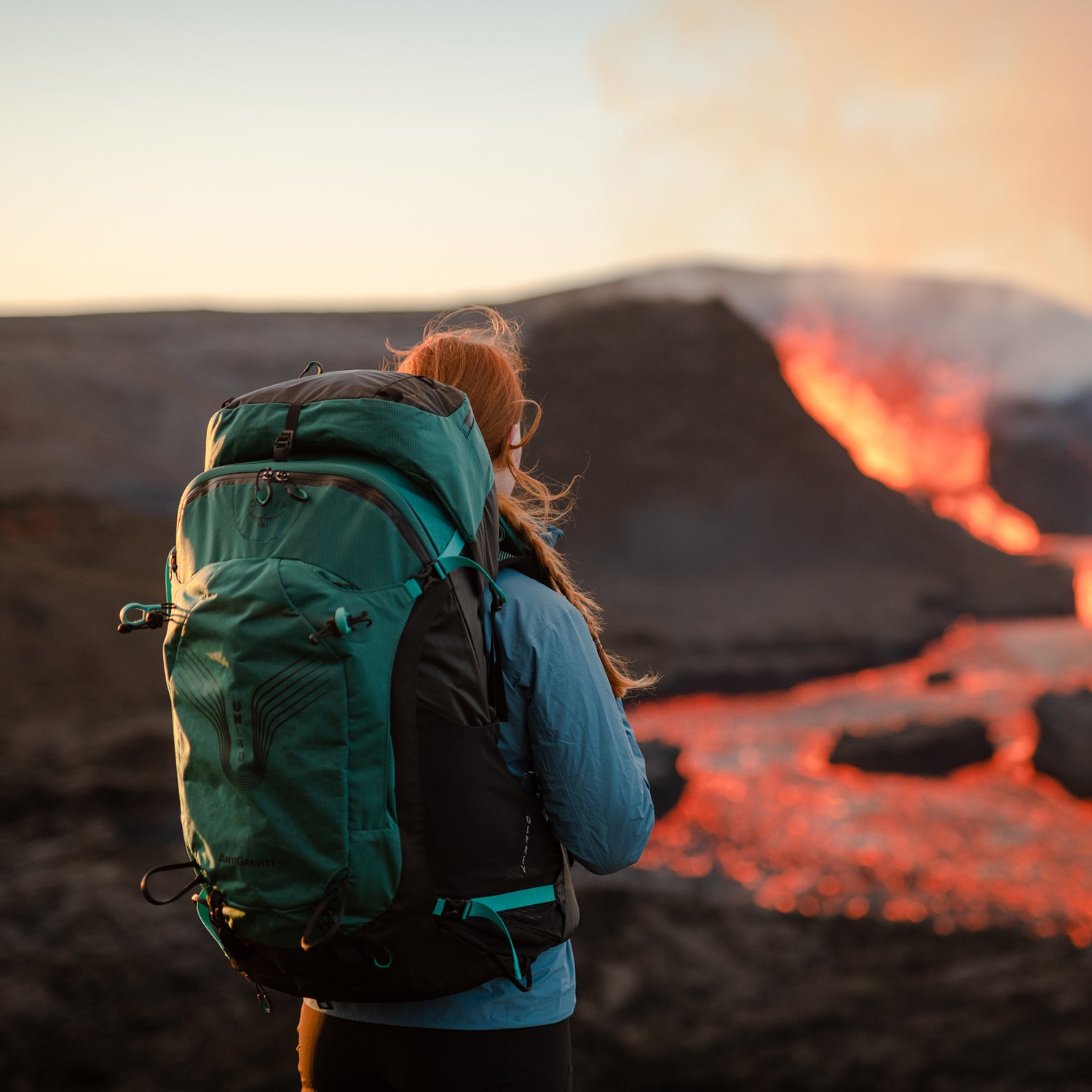What kind of backpack do you get when price imposes no limit? That was the concept Osprey set out to fulfill with its new , which launched this week. “I wanted to showcase all that we could do,” says Mike Pfotenhauer, Osprey’s founder and lead designer.
The first thing you notice is the price tag: the men’s and women’s Antigravity 64 and Airscape 68 retail for $700. No matter how well engineered a pack is or how much you pay for it, it’ll still make your legs ache when you cram it full and lug it up the trail. That said, I tested out the Antigravity 64 on a four-day traverse of the Teton Crest Trail in Wyoming last summer and can attest that it is by far the sweetest pack I’ve carried in 30 years of backpacking. (I never got a crack at the Airscape, which is designed with more rigid suspension for heavier loads, but shares many of the Antigravity’s innovations.)
The second thing you notice is the 3D-printed lumbar pad, which was the genesis of the UNLTD line. It was developed with Silicon Valley firm Carbon. Carbon prints products for the automotive and dental industries (headrests and individualized dentures, respectively) and has ventured into the outdoor space in recent years with and , both featuring the same distinct polyurethane (PU) latticework the Osprey lumbar pads are made from. The PU strands are remarkably elastic—they can be elongated 250 percent before they break, which gives the lumbar pads a springy, dynamic feel.

The 3D-printing process allows Carbon to make shapes that are impossible to achieve with injection molding—and with remarkable speed. In just over a year, the company made close to 100 different permutations of the design, all with far less waste than injection molding.
Carbon can also tune the compressibility within the object by changing the density of the lattice in different areas. The lumbar pad is more compressible toward the top (for comfort) and firmer toward the bottom (for better load bearing), all of which gives the pad the cushioned, supported feel while maintaining remarkable breathability, thanks to its weblike structure. My shirt never wetted out as I chugged up the trail in temps as high as 80 degrees.
Despite that high-tech basis, the UNLTD Antigravity 64 is still essentially an upgrade to Osprey’s cult classic Atmos and women’s Aura. Those packs both feature almost seamless mesh that extends from the back panel across the hipbelt, creating remarkable ventilation and an exceptionally snug yet frictionless fit. It works great until loads reach more than 40 pounds, at which point both packs struggle to keep their loads stable due to the extensive trampoline design. Carrying an overloaded Atmos is a bit like riding in a car that needs its shocks replaced—it’s excessively bouncy.

The UNLTD Antigravity solves that load stability issue while maintaining the Atmos’ ventilation and snug fit in a couple ways. The first is that lumbar pad, which is less elastic than the Atmos’ tensioned mesh panel. The second is an upgraded stainless steel and aluminum frame underneath the tensioned back panel and hipbelt mesh. I didn’t set off on a three-night backpacking trip with a 40-pound load, but to test the limits of the pack for a handful of miles, I filled it up with all the food and water I could borrow from trip mates, getting to about 45 pounds altogether. The pack stayed plenty stable even as I trundled around the Hurricane Pass switchbacks.
The other big innovation in both the UNLTD Antigravity 64 and Airscape 68 is the pack strap auto-lift system. Rather than having both a lower tensioning strap and a lift strap above the shoulders, the UNLTD models feature a continuous system that both lifts and tightens the harness with one pull of the lower strap. I found that this apparatus continually adjusted itself on the trail to ensure a close, equalized fit around my shoulders, reducing painful pressure points. Together with the continuous mesh of the hip panels, the Antigravity 64 was the best-fitting pack I’ve worn. That, along with the fantastic ventilation, made it a revelation to carry.
Other unique features in the Antigravity include raised polyurethane printing on the hipbelt exterior to reduce abrasion at that known wear point; a built-in sleeping bag compression sleeve; lighter and more durable fabrics, like molecular-weight polyethelene; and a pair of plastic bumpers that protrude from the base of the pack, providing better stability and helping reduce wear and tear when the pack is standing upright on the ground.

I also loved the pack’s proprietary clamshell main compartment opening—a steel wire runs across the top of the body, providing a lightweight structure that helps maintain the opening for loading and unloading while also making it easier to operate the waterproof zipper. It also helps apply uniform pressure across the load when the upper side compressors are adjusted.
All these innovations and bells and whistles do add up to a heavier weight and cost. The UNLTD Airscape 64 weighs 5.44 pounds—roughly a pound more than many 65-liter packs. To shed a little weight, you can always jettison the eight-ounce 7.5-liter top lid, though it does double as a fanny pack for summit pushes.
Overall, the Antigravity was clearly superior to other packs I’ve used—easier to load, easier to carry, and more comfortable. Much like driving the deluxe model of a vehicle, using the top-of-the-line pack was more fun but came at a cost.


